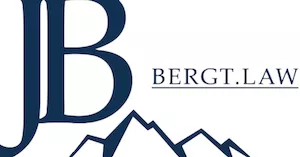- within Law Practice Management topic(s)
- with readers working within the Consumer Industries and Oil & Gas industries
In a jurisdiction that traditionally prides itself on the finely tuned equilibrium between investor confidentiality and regulatory integrity, the Liechtenstein Parliament's (Landtag's) near-unanimous first-reading approval on 9 May 2025 of the Government's bill to overhaul the Financial Intelligence Unit Act (FIU-G) – marks a turning point, not least because the debate revealed virtually no political appetite for dilution of the ambitious framework that will become binding on 1 November 2025, thereby compressing the usual adjustment timeline by two full months.
- A genuine paradigm shift: the codified risk-based approach
For the first time, the statute obliges the FIU to allocate analytical resources according to internally calibrated parameters rather than on a first-come-first-served basis, anchoring the concept in a new Article 3a and mandating continuous parameter reviews in consultation with the Public Prosecutor's Office; in plain terms, case triage will henceforth follow an algorithmic probability matrix instead of chronological happenstance.
- Tech-enabled, yet human-controlled analytics
The FIU may feed electronic risk-rating engines with suspicious-activity data received from obliged entities, foreign counterparts or open sources, but the law simultaneously prohibits self-learning systems that autonomously label individuals as "high-risk", a safeguard that mitigates both privacy concerns and explainability gaps in artificial-intelligence models.
- Unprecedented data-gateway portfolio
To give analytical teeth to the risk-based credo, the FIU receives real-time, pull-only windows into the Central Account Register, the Beneficial-Ownership Register, the national vehicle-holder file, INTERPOL databases and even tourist-tax compliance records, turning disparate silos into a consolidated evidence lattice that can rapidly corroborate or refute transactional red flags.
- From "know-your-client" to "know-your-counterpart": strategic and tactical PPPs
Beyond classic supervisory channels, the amendment authorises both long-term thematic ("strategic") and case-specific ("tactical") Public-Private Partnerships – and even a hybrid of the two – enabling banks, fiduciaries and FinTech platforms to exchange typologies and red-flag patterns under carefully choreographed Chatham-House protocols, while leaving professional-secrecy walls intact.
- A feedback loop long demanded by the private sector
Although obliged entities have frequently lamented the "send-and-forget" nature of suspicious-activity reporting, the new Article 5b introduces an optional yet government-backed mechanism through which the FIU may share aggregated quality-scores, timeliness metrics and illustrative case trends, a move designed to lift SAR precision without jeopardising source confidentiality.
- Cross-border cooperation under Egmont confidentiality
Information exchange with foreign FIUs remains anchored in the Egmont-Group principles, which insist on full confidentiality while allowing Liechtenstein to continue bypassing lengthier mutual-legal-assistance routes; put differently, the domestic transparency gains do not translate into carte-blanche data outflows, thereby preserving strategic sovereignty.
- Compliance countdown: what market participants should be doing now
Given that banks, asset managers, trustees, insurers and crypto-service providers will be inspected under a far more granular lens from Q4 2025 onwards, prudent actors should already (i) map their data lakes to the FIU's enhanced register access, (ii) upgrade transaction-monitoring rules to anticipate algorithmic risk scores, (iii) negotiate PPP participation clauses that protect trade secrets while enabling value-add intelligence sharing, and (iv) embed a two-way SAR dashboard capable of absorbing and tracking FIU feedback in a secure audit trail.
Bergt Law has assembled a multidisciplinary strike-team of AML attorneys, data-privacy engineers and former regulator analysts to stress-test your existing workflows against the statute's 360-degree obligations; contact us via bergt.law/en to schedule a scoping call.
Sources: Report And Motion Concerning the FIU Law, No. 45/2025.
Key findings & core statements
- Risk first: the FIU must allocate resources according to dynamically updated risk parameters rather than static queues.
- AI with brakes: machine-learning tools may assist but cannot autonomously label persons as dangerous.
- Data tsunami: online taps into five major registers fortify investigative capabilities overnight.
- PPP 2.0: both strategic and tactical information alliances with the private sector become legally possible, including hybrid models.
- SAR feedback: a newly codified mechanism promises quality reports on suspicious-activity filings.
- Egmont shield: international exchanges stay bound to strict confidentiality standards.
- Rapid go-live: provisions bite on 1 November 2025, leaving only a few months for full implementation.
The content of this article is intended to provide a general guide to the subject matter. Specialist advice should be sought about your specific circumstances.


